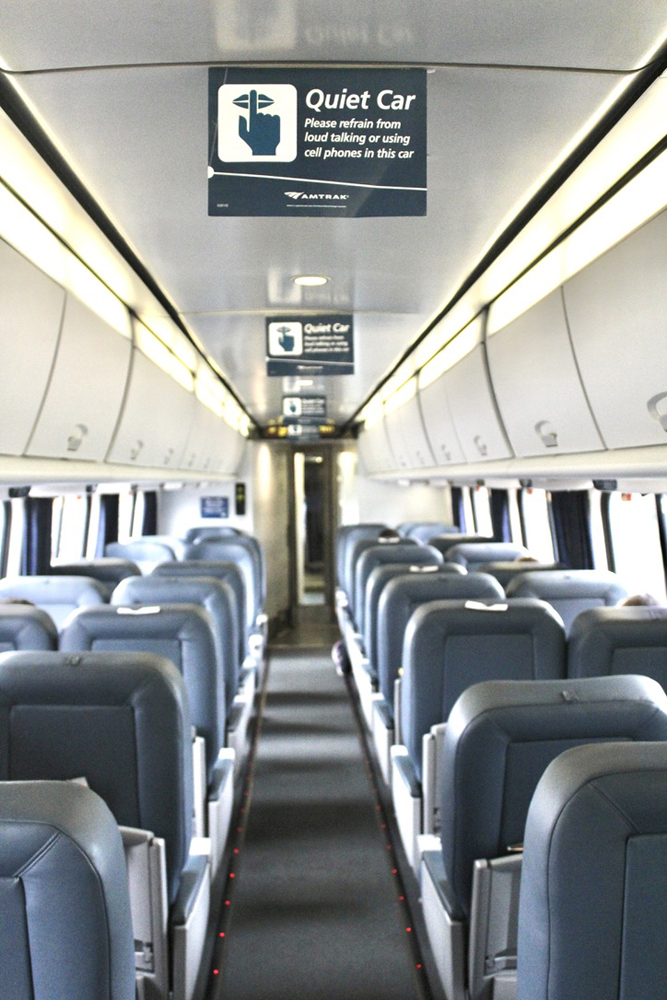
WASHINGTON — The “Quiet Car” has become a staple on most U.S. corridor trains and many commuter operations. The innovation was first suggested in 1999 by an Amtrak volunteer organization later dissolved by CEO Richard Anderson after the former head of Delta Airlines was hired by Amtrak’s board of directors in 2017.
Amtrak’s Customer Advisory Committee, funded annually by the passenger operator utilizing a “pass through” grant to what was then the National Association of Railroad Passengers (now the Rail Passengers Association), met several times each year with management representatives. Its geographically diverse members serving three-year terms regularly rode trains — unannounced — in their regions, observing passenger challenges and suggesting possible improvements designed to increase ridership and customer satisfaction.
The Surface Transportation Board’s newly formed Passenger Rail Advisory Committee [see “STB names 21 …,” Trains News Wire, March 28, 2024] in many ways provides an opportunity to revisit many issues the ACAC regularly grappled with. The question remains: what range of existing Amtrak practices will the STB’s committee address and how much interaction and influence will its recommendations have on Amtrak management policies?
Current STB oversight
Under the leadership of retiring Chairman Martin Oberman, the STB has actively injected itself into the interface between Amtrak and its host railroads on behalf of the public. The board has created a separate “Office of Passenger Rail” in response to legislation giving the STB authority to adjudicate on-time performance disputes.
Its first case, involving Union Pacific’s handling of the Sunset Limited, is encountering procedural delays more than 15 months after Amtrak asked for the investigation [see “Union Pacific seeks more time …,” News Wire, March 30, 2024]. And the board’s attempt to get two Amtrak round trips rolling between New Orleans and Mobile, Ala., continues to face roadblocks two years after hearings began [see “Gulf Coast impasse at Mobile remains unresolved: Analysis,” News Wire, March 18, 2024].
Defining the scope
In a statement to Trains News Wire when formation of the passenger committee was announced last November, STB spokesman Michael Booth said, “PRAC’s specific agenda is not set by the Board but by the Committee members, though the Board may request input on specific topics. Topics for the PRAC to address are not dictated because the Board does not presume to know what is most important to the Committee. The Board has found its other three advisory councils and committees [dealing with shipper and shortline concerns, grain carriage, and energy transport] to be exceptionally helpful, and looks forward to a similar working arrangement with PRAC.”
One of the 21 appointees, Rail Passengers Association CEO Jim Mathews, emailed association membership over the weekend outlining what he expects the committee to accomplish. “The PRAC is going to help the agency work on practical ways to fix the broken relationships between Amtrak, states, and host railroads … fractures that make our trains less convenient, efficient, and useful than they should be,” adding, “We’ll work on customer-service issues, too. And advise the STB on important issues that come before it on passenger rail.”
ACAC lessons
Those goals seem to replicate what Amtrak’s Customer Advisory Committee attempted to achieve. From its formation in 1997 when then-Amtrak President Tom Downs’ business-unit structure featured regionally managed product lines with profit and loss responsibility, the committee was a collaborative affair with management. Its collective recommendations weren’t always followed, but there was usually ongoing dialogue with department heads and front-line managers.
Trains News Wire attended a December 2000 ACAC meeting in Jacksonville, Fla., and the 15th anniversary gathering in April 2013 (it had been postponed from the previous November by Tropical Storm Sandy). Notes from both of those meetings reveals a litany of concerns that still resonate today. They include:
— Amtrak employees occupying too many tables in cafe cars to the exclusion of paying passengers.
— Ways to encourage coach passengers to spend money in dining cars.
— Enticing travelers to expeditiously upgrade to sleeping accommodations when space is available.
— Dealing with overflow luggage issues when checked baggage is not available.
— Addressing non-uniformity of business class on different corridor routes.
— Best practices for accommodating passengers with disabilities.
All levels of management attended both meetings and exhibited a genuine interest in learning what needed attention. In addition to the Quiet Car, the ACAC played a major role in sequestering smokers, then calling for elimination of smoking on all trains. Getting healthy menu options into dining and cafe cars was another major committee accomplishment. The requirement for committee members to ride the rails incognito to file reports (about 2,000 were filed from 1997 through the 2013 meeting) proved to have a significant benefit in that they often encountered employees who provided exemplary service. Recognition through annual ACAC Customer Service Awards, based on those reports, encouraged fellow workers to strive for excellence.
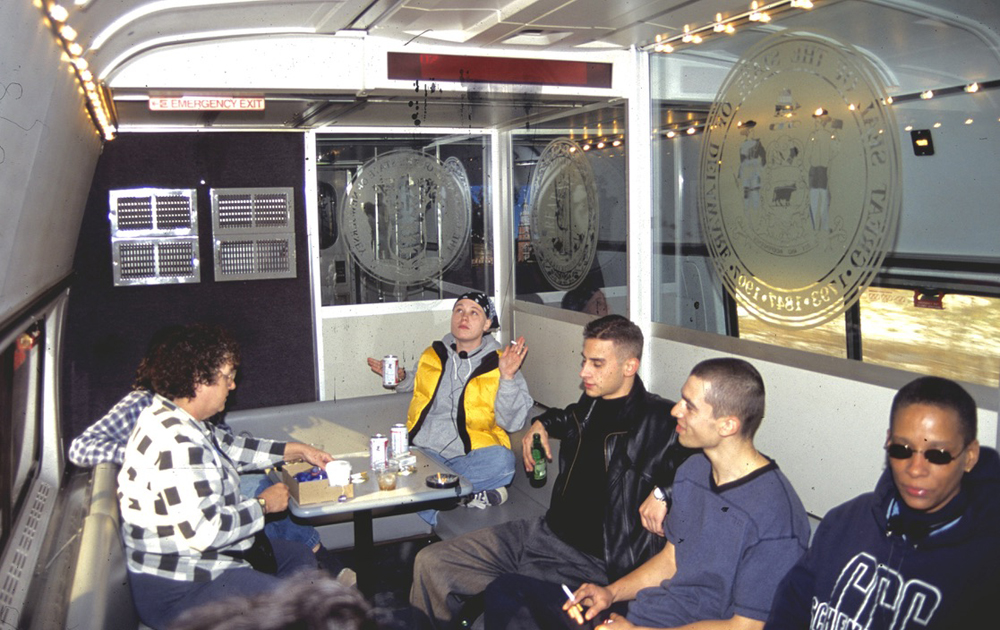
Suggestion or enforcement?
The drawback, of course, was that management was under no obligation to make changes the ACAC suggested. Nor should it have been, since those in charge had the ultimate responsibility to maximize revenue and control expenses while providing mobility to the traveling public.
The new committee’s Surface Transportation Board’s affiliation, however, injects a level of advocacy on behalf of the public interest that wasn’t present with the essentially “in-house” ACAC. Class I railroads have pushed back against what they feel has been the STB’s intrusion into their business practices, particularly criticism of Precision Scheduled Railroading.
At Amtrak, the decision to jettison the ACAC was followed by a litany of cost-focused long-distance network capacity and amenity downgrades that have triggered numerous sellouts or high prices, negatively impacting communities and travelers. Management has restored enough Amfleet and Horizon coaches sidelined during the COVID-19 pandemic to handle Northeast and state-supported corridor demand, but after three years has failed to similarly adjust maintenance protocols that would return idle Superliners and Viewliners to service.
The passenger carrier has also been increasingly reticent to share operating metrics with anyone outside the company, Trains News Wire has learned from members of States for Passenger Rail Coalition. Are cost allocation formulas, organization charts, and reasoning behind overhaul priorities subject to the STB committee’s inquiry and oversight?
These are some of the issues likely to surface as the new Passenger Rail Advisory Committee sets its initial agenda.
— Updated at 11:40 a.m. CDT to correct reference to 2,000 reports filed by committee members.
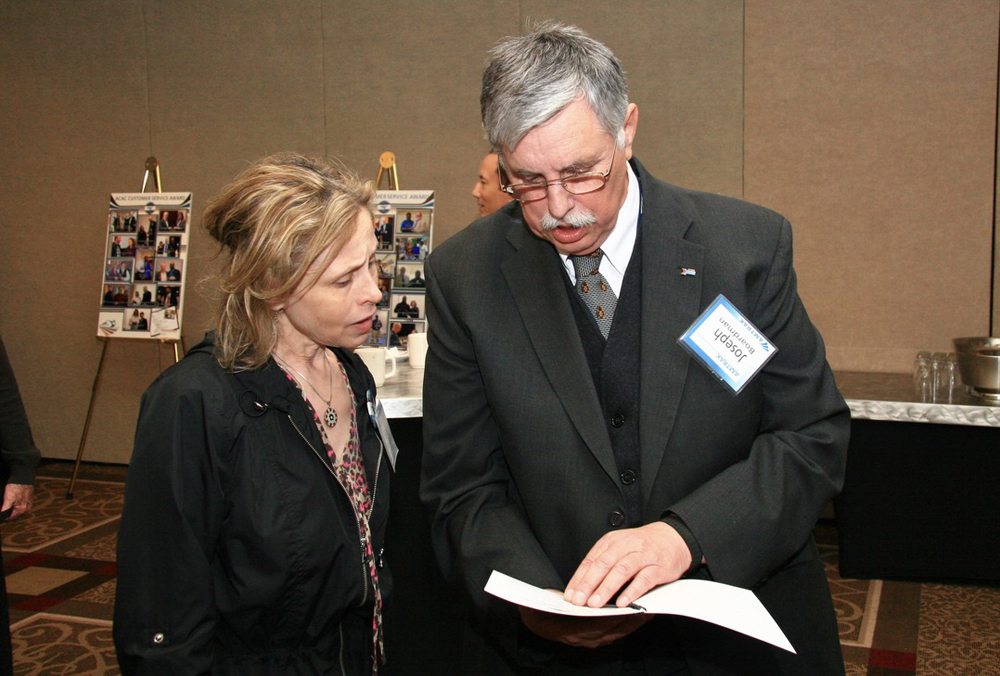






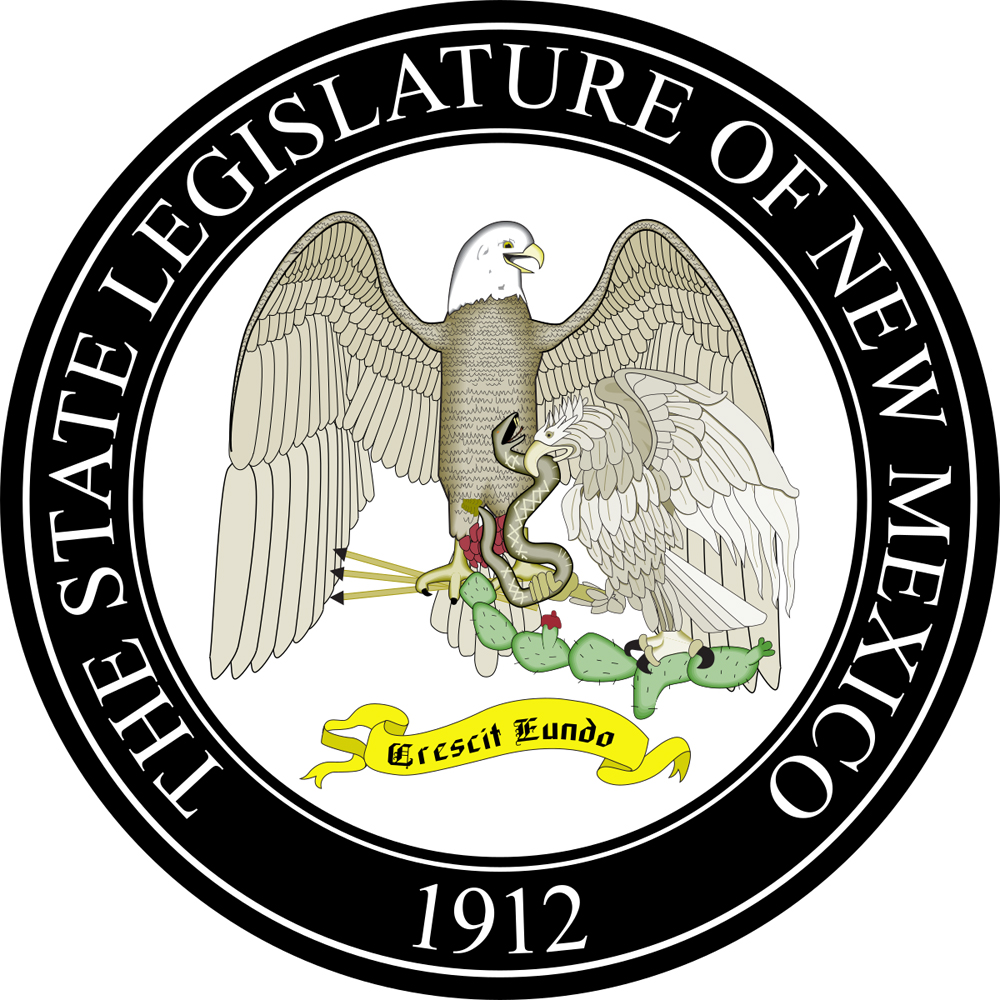

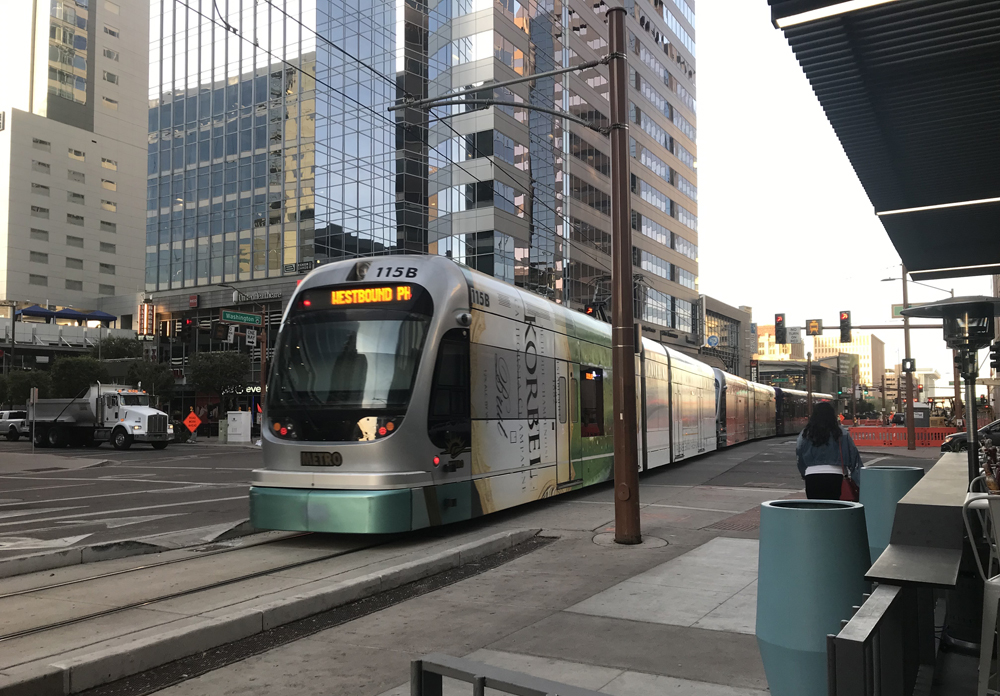
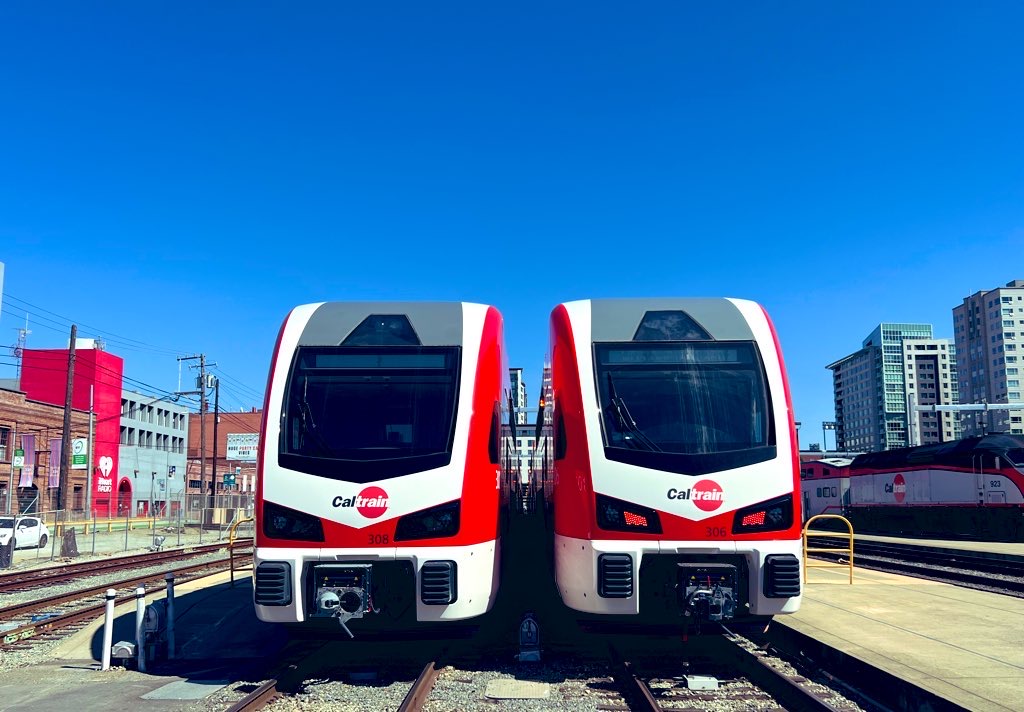




Bob Johnston has done an excellent job reporting on the history of the ACAC and in observing that the new STB committee could replicate the best aspects of the ACAC.
Too many cooks. Enough said,
Current Amtrak Management is NOT concerned about improving or expanding long-distance train service. They have zero interest in long-distance trains!
Management is only laser-focused on corridor and short-distance, regional services in various markets around the country.
The function of operating, improving and expanding long-distance passenger trains in the U. S. should be separated from Amtrak into a new company, NOT BASED in Washington, DC (perhaps Chicago, St. Louis, Kansas City) that would focus ONLY on all long-distance train service!
Obviously, the committee has too large a membership representing too many interest groups to get anything done. That being said, here’s my thought: start at the top. Return Amtrak to what was promised to us in 1971: a NATIONAL system. Why do we have Brightline? Because Amtrak didn’t do the job is was supposed to do, so someone else stepped up and succeeded where Amtrak didn’t even try.
This committee can act as a source of useful ideas for Amtrak’s consideration, whether or not the committee takes a formal stand on them. Having so many Amtrak management from outside the railroad industry arguably makes the committee even more valuable–especially if Amtrak folks show up at meetings and pay attention as they did with the ACAC.